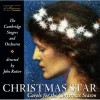Composers
William J. Kirkpatrick
| Country: | United States Of America |
| Period: | Romantique |
William J. Kirkpatrick (February 27, 1838 – September 20, 1921) was born in Duncannon, Pennsylvania to a schoolteacher and musician, Thomas Kirkpatrick. He was exposed to and given formal training in music at a very young age. In 1854, he moved to Philadelphia to study music and carpentry. It was here that he studied vocal music under Professor T. Bishop. Kirkpatrick was a versatile musician playing the cello, fife, flute, organ, and violin. He joined the Harmonia and the Haydn Sacred Music Societies where he was exposed to many great composers. In 1855, he became involved in the Wharton Street Methodist Episcopal Church serving the choir with his musical talent and teaching Sunday school.
Beginning in 1858, Kirkpatrick began working with A.S. Jenks who helped him publish his first collection of hymns, Devotional Melodies, in 1859. His involvement with the Harmonia Society introduced him to another man, Dr. Leopold Meignen, under whose tutelage he devoted himself primarily to the study of music focusing on theory and composition.
In 1861, William Kirkpatrick married his first wife. Not long after the marriage, he enlisted in the 91st Regiment of the Pennsylvania Volunteers as a Fife-Major. This lasted until October 1862, when under general orders, the position was terminated. He returned to Philadelphia and supported his wife by working in carpentry. Over the next 11 years, Kirkpatrick was elected lead organist for the Ebenezer Methodist Episcopal Church, studied the pipe organ, continued in vocal lessons, and began publishing more and more hymns. It was also during this time that he was introduced to John R. Sweeney. They soon became partners in their musical careers. The death of Kirkpatrick’s wife in 1878 acted as a catalyst in his life to give up the trade and devote himself fully to music and composition.
Between 1880 and 1897, Sweeney and Kirkpatrick published 49 major books. It was also during this time that Kirkpatrick was given command over all of the music at Grace Methodist Episcopal church. He married again in 1893 and became a world traveler with his wife. Over the years he published close to 100 major works and many annual works such as anthems for Easter, Christmas, and children’s choirs.
William J. Kirkpatrick died on September 20, 1921. He told his wife that night that he had a tune running through his head and he wanted to write it down before he lost it. His wife retired to bed and awoke in the middle of the night to find that he was not there. She went to his study to find him, and when she did, he was slumped over on his desk, dead. His interment was located in Philadelphia's Laurel Hill Cemetery.
Refine by search
view all| Country: | United States Of America |
| Period: | Romantique |
Biography
William J. Kirkpatrick (February 27, 1838 – September 20, 1921) was born in Duncannon, Pennsylvania to a schoolteacher and musician, Thomas Kirkpatrick. He was exposed to and given formal training in music at a very young age. In 1854, he moved to Philadelphia to study music and carpentry. It was here that he studied vocal music under Professor T. Bishop. Kirkpatrick was a versatile musician playing the cello, fife, flute, organ, and violin. He joined the Harmonia and the Haydn Sacred Music Societies where he was exposed to many great composers. In 1855, he became involved in the Wharton Street Methodist Episcopal Church serving the choir with his musical talent and teaching Sunday school.
Beginning in 1858, Kirkpatrick began working with A.S. Jenks who helped him publish his first collection of hymns, Devotional Melodies, in 1859. His involvement with the Harmonia Society introduced him to another man, Dr. Leopold Meignen, under whose tutelage he devoted himself primarily to the study of music focusing on theory and composition.
In 1861, William Kirkpatrick married his first wife. Not long after the marriage, he enlisted in the 91st Regiment of the Pennsylvania Volunteers as a Fife-Major. This lasted until October 1862, when under general orders, the position was terminated. He returned to Philadelphia and supported his wife by working in carpentry. Over the next 11 years, Kirkpatrick was elected lead organist for the Ebenezer Methodist Episcopal Church, studied the pipe organ, continued in vocal lessons, and began publishing more and more hymns. It was also during this time that he was introduced to John R. Sweeney. They soon became partners in their musical careers. The death of Kirkpatrick’s wife in 1878 acted as a catalyst in his life to give up the trade and devote himself fully to music and composition.
Between 1880 and 1897, Sweeney and Kirkpatrick published 49 major books. It was also during this time that Kirkpatrick was given command over all of the music at Grace Methodist Episcopal church. He married again in 1893 and became a world traveler with his wife. Over the years he published close to 100 major works and many annual works such as anthems for Easter, Christmas, and children’s choirs.
William J. Kirkpatrick died on September 20, 1921. He told his wife that night that he had a tune running through his head and he wanted to write it down before he lost it. His wife retired to bed and awoke in the middle of the night to find that he was not there. She went to his study to find him, and when she did, he was slumped over on his desk, dead. His interment was located in Philadelphia's Laurel Hill Cemetery.



